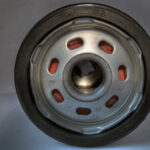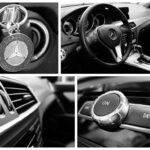Can a Wheel Speed Sensor Cause Limp Mode?
Defective wheel sensor is a common occurrence in automobiles. However, most people are interested in knowing if a wheel speed sensor can cause limp mode.
The simple answer is NO. A wheel speed sensor alone is not responsible for triggering limp mode. However, the vehicle speed sensor (VSS) combined with other car problems might cause the car to go into limp mode.
This may sound confusing to you. To get to know more about it, first, you need to understand what is a limp mode, and how a car ends up getting in limp mode. Then, I will explain how the wheel speed sensor is involved in all of this.
What is Limp Mode?
Modern electronic systems in cars are quite sensitive and can identify a wide variety of threats. And due to these computerized technologies, it is also feasible to diagnose an automobile whenever particular indications emerge on the dashboard.
For instance, when the car’s electronic systems detect a severe problem with the transmission, they activate the limp mode and put certain safety-critical subsystems into hibernation.
Limp Mode is characterized by a significant decrease in speed and the automated shutdown of several of the car’s systems, including the air conditioner.
Furthermore, when a car is in Limp Mode and you try to speed up; you might feel like the engine isn’t stable. It’s also possible that the transmission is iffy, requiring you to keep your speed down.
Also read: Symptoms of a Loose Strut Nut (+How to Fix it)
What Could Cause Limp Mode in a Vehicle?
Alone a single factor can be named for triggering the limp mode. Multiple flaws in the system collectively cause the car to move into limp mode. Some typical causes of limp mode include boost leaks, defective engine sensors, and gearbox problems.
Transmission Issues: If your vehicle is equipped with an automatic transmission, the Transmission Control Module (TCM) puts the vehicle into “limp mode” if there is a problem with the drivetrain. A malfunctioning sensor, valve, low transmission fluid level, or a broken shift solenoid are frequently to blame for this.
Faulty Sensors: Sensor failure is another typical reason. Since the engine is linked to multiple sensors it is difficult to determine which of the sensors has put your automobile into this mode. For that, you may take the help of the OBD2 scanner.
MAF sensors, engine temperature sensors, boost pressure sensors, wheel speed sensors, and O2 sensors are typical sensors that can cause limp mode.
Engine Boost Problems: Boost-control issues are by far the most frequent cause of limp mode. This can be an over-boost or a boost leak. Over boost is frequently brought by malfunctioning wastegates, damaged wastegate hoses, or faulty pressure sensors.
Wiring Issues: When it comes to this mode, wiring problems with the engine or transmission are also rather typical. For instance, if the connection to a sensor is broken, the engine won’t work properly, hence forcing to move the vehicle into limp mode.
How Does the Limp Mode Effects the Vehicle While Driving?
Limp mode is a safety feature. So, whenever the engine control unit detects a fatal issue it limits the car’s functionality.
Limited Functionality: When the car is set into limp mode, several of the car’s systems, including the air conditioner, are automatically shut down.
Restricted RPM: The control unit also drastically reduces the engine rpm. In most cases, the engine rpm doesn’t exceed the 3000 mark.
Gear Shifting Restriction: The gear shifting is restricted to gear 2 or 3 if the car is in limp mode. If you try to engage other forward gears, they won’t engage.
Can a Wheel Speed Sensor Cause Limp Mode?
A faulty wheel speed sensor isn’t the sole cause of Limp Mode; erratic readings from the wheels might trick the ABS computer into thinking there’s been a loss of traction. And the computerized system is compelled to engage a slightly “safe mode” when the speed sensor delivers incorrect data to the ABS. However, the “safe mode” isn’t technically the same as the limp mode.
In this case, the vehicle may have considerable hesitancy, and the “traction limited” warning light may come on. In addition, you would witness a large drop-off at low speeds when your car’s speed sensors fail. But the limp mode isn’t triggered.
For your automobile to be put in “Limp Mode,” the system must have detected and stored an error code for too long. This usually happens when a fatal error occurs in transmission and multiple sensors like MAF, engine boost sensor, O2 sensor, or speed sensor turns bad.
Also read: The Top 5 Best German Wheel Brands
How Do You Know That You Have A Bad Wheel Speed Sensor?
When the wheel sensor turns bad, you start witnessing signs like the illumination of Check Engine Light (CEL), erratic speed readings, and failure to engage in cruise control.
CEL Illumination
When your automobile is in limp mode, the check engine light is the first thing you will see on the dashboard.
Since the check engine light can be activated by a wide variety of issues, it is essential to utilize an OBD2 scanner to correctly identify the problem whenever it appears.
Erratic Readings
Automobiles rely heavily on data from the wheel speed sensor to power the speedometer. If the speed sensor fails, the accuracy of the speedometer will be compromised. A vehicle’s speedometer will give an inaccurate or fluctuating reading until the problem with the speed sensor is fixed.
Cruise Control Fails to Engage
The Power Control Module (PCM) of a vehicle will turn off the cruise control system if it does not receive a signal from the wheel speed sensor.
Therefore, if you find that your cruise control is not activating while driving, it may be due to a faulty speed sensor.
What Problems Does a Bad Wheel Speed Sensor Cause in a Car?
A bad speed directly affects the engine’s transmission. Based on the information provided by the wheel speed sensor, the transmission system precisely times each gear change. But when this sensor fails to provide the required signal, the transmission mechanism is unable to engage properly.
Moreover, if the speed sensor is faulty, the gearbox may show symptoms such as difficult shifting, sluggish shifting, and restricted gear shifting.
Anti-lock braking systems and traction control are also monitored by the wheel speed sensors. So, if the speed sensor fails, anything in the car that relies on the ABS will be affected greatly.
Many US drivers would be subject to several speeding fines without the help of functioning wheel speed sensors.
How to Reset the Limp Mode?
Limp mode prevents the car if it detects any flaw. However, if you are certain that the transmission problem was just temporary then you can reset the limp home mode by following these steps.
- Bring your vehicle to rest.
- Put it in the PARK position.
- Turn “OFF” the ignition to
- Wait for 10 to 15.
- Restart your car.
- Select the gear you want to engage.
You can keep operating your car normally if it will shift into the gear you selected. But if the vehicle is still stuck in the second gear, you likely have a transmission issue that has to be fixed right away. For that, you need to take the help of a professional mechanic.






